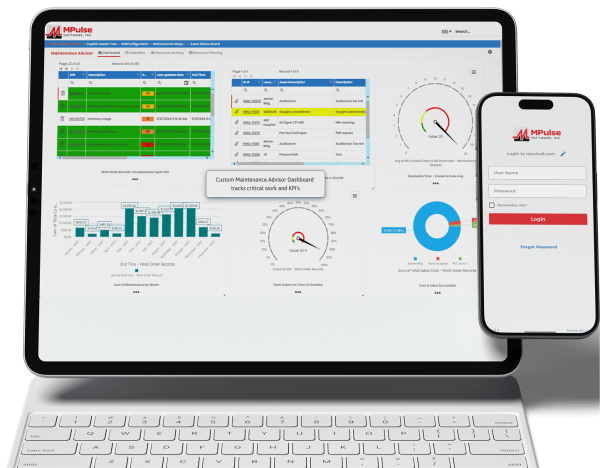In this maintenance management article series, we talk about the future of proactive maintenance strategies. Globalization and related competitive pressures have resulted in rapid changes across just about every industry, and maintenance employees are feeling those changes in the workplace, both in the facilities environment and on the plant floor.
Most professionals in maintenance operations of all sizes have already experienced these industry changes firsthand, while others see them coming quickly down the pipeline. Some organizations have embraced these changes, but others are floundering, in real danger of being left behind.
In this series, we’ll identify the 11 most important trends driving changes in proactive maintenance strategies today. Then we’ll show you how to use each trend to create a competitive advantage for your company using computerized maintenance management system (CMMS) software and related technologies. These proactive maintenance strategies will help you discover how to save money, improve response times, and keep your assets running longer and more efficiently.
Table of Contents
Top 11 Trends for the Future of Maintenance Management
1. Technology Adoption
Computers, networks, and mobile devices are now in the hands of almost every employee—including the maintenance team.
2. Enter the “Digital Native”
Older workers are retiring, and the younger “digital natives” coming onboard have a deeper understanding of technology and its capabilities.
3. Data-Driven Management
Managers want the ability to back up decisions with hard data—requiring better tracking and reporting systems.
4. Mobile Technology
Mobile technology is expanding rapidly, and the ability to connect from the field is a natural fit for maintenance operations.
5. Software Cost & Implementation Time
CMMS software is now more affordable and easier to implement than ever, putting it within virtually every organization’s reach.
6. Cloud Computing
Increasing bandwidth and more affordable hosting options mean you don’t need expensive hardware or a highly skilled internal IT team to access great software.
7. Systems Integration
CMMS data now links easily with other systems, such as ERP and accounting software, predictive maintenance monitors, building automation systems, and more.
8. Insourcing vs. Outsourcing Analysis
Increasingly, companies are saving money by focusing on their core competencies and leaving specialized tasks to outside vendors. CMMS tools can help you analyze which tasks, processes, or functions you should keep in-house and which you should consider outsourcing.
9. Environmental Impact
More organizations are seeking LEED and other “green” certifications. They need reliable maintenance and facility data to achieve and maintain them.
10. Regulatory Compliance
Regulatory bodies are requiring increasingly complex recordkeeping. Organizations that meet this challenge are saving millions in fines and liability lawsuits.
11. The Internet of Things
The IoT is a natural fit with the way maintenance teams operate—collecting data faster and easier than ever before. Best of all, maintenance teams can use that information to proactively perform maintenance and even predict asset failures.
To some, these emerging proactive maintenance strategies might seem intimidating. For those who embrace these changes and work to stay ahead of the curve, though, these trends offer a chance to gain competitive advantage. With the help of CMMS software, you can capture critical data for making good decisions to help your organization save time and money. As a best practices “champion” who understands these trends, you can personally become the leader who keeps your organization at the top of its game.






